
Over the past few years, vintage-inspired dive watches have seen a meteoric rise in popularity as manufacturers have rushed to modernize and rerelease their 1950s and 1960s models. With the SeaQ, Glashütte Original has not only entered the fray but has elevated the trend to meet the standard of quality and precision for which the German watchmaker is known. The SeaQ is able to remain incredibly loyal to the 1969 Glashütte Original Spezimatic Type RP TS 200 while introducing both a modern movement and an impeccable finish to the watch. The result is a perfectly sized and beautifully made German tool watch that stands out among both vintage recreations and larger, modern dive watches.
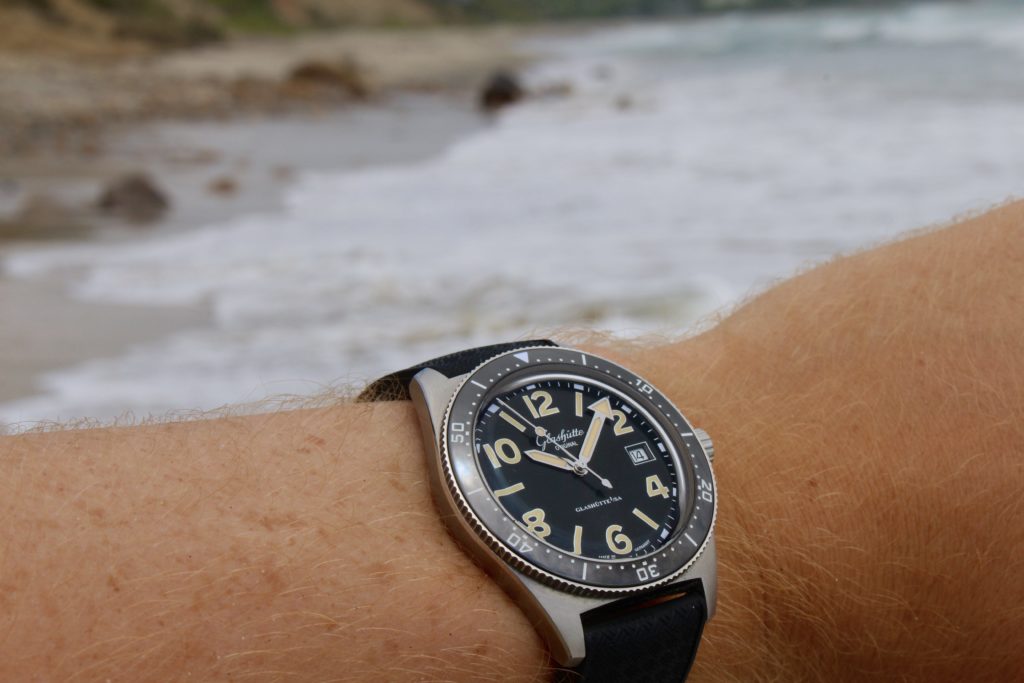
The small, rural town of Glashütte has been the hotbed of German watchmaking for 175 years. Along with neighboring brands such as A. Lange and Söhne and NOMOS Glashütte, Glashütte Original has helped build the town’s reputation for high quality, precise watchmaking with a distinct, German style. Glashütte Original’s roots extend back to 1845, although the brand gained notoriety under its current name in the 1960s with advanced, “shockproof” movements. Among these early watches was the Spezimatic dive watch, a limited production model that represented the brand’s foray into the sports watch market. The new SeaQ draws heavily on the design of the 1969 Spezimatic, making it one of the most loyal vintage recreations. Glashütte Original might be influenced by the past with their popular Sixties, Seventies, and new Spezialist collections, but don’t let the patina fool you: The SeaQ is still a 21st century dive watch able to go toe-to-toe with its serious competition.
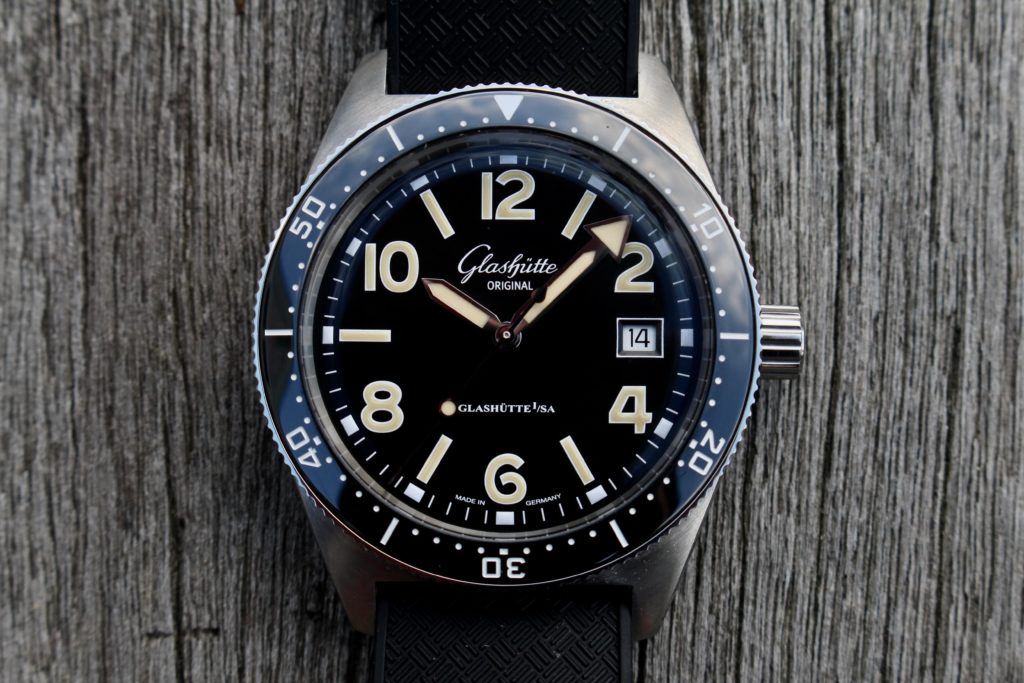
Often referred to as the “small SeaQ” alongside the 43.2mm SeaQ Panorama Date, the watch’s 39.5mm size perfectly matches its 1960s dive style. A sub-40mm dive watch is rare in today’s market and for someone not looking to carry the considerable heft of the Panorama Date, the SeaQ more than makes up for its smaller power reserve. At first glance, the case is simple and focuses attention onto the dial. On the wrist, however, the intricacies and detail of the case quickly become clear. The finely brushed case gives the steel a matte, dark grey appearance and emphasizes the case’s highly polished beveled edges. The polished upper bevel on the case sweeps down to the squared-off lugs which appear sharp but curve comfortably over the wrist. The large, unguarded crown makes time setting easy and is gorgeously finished with the polished Glashütte Original logo raised slightly above the brushed steel end.
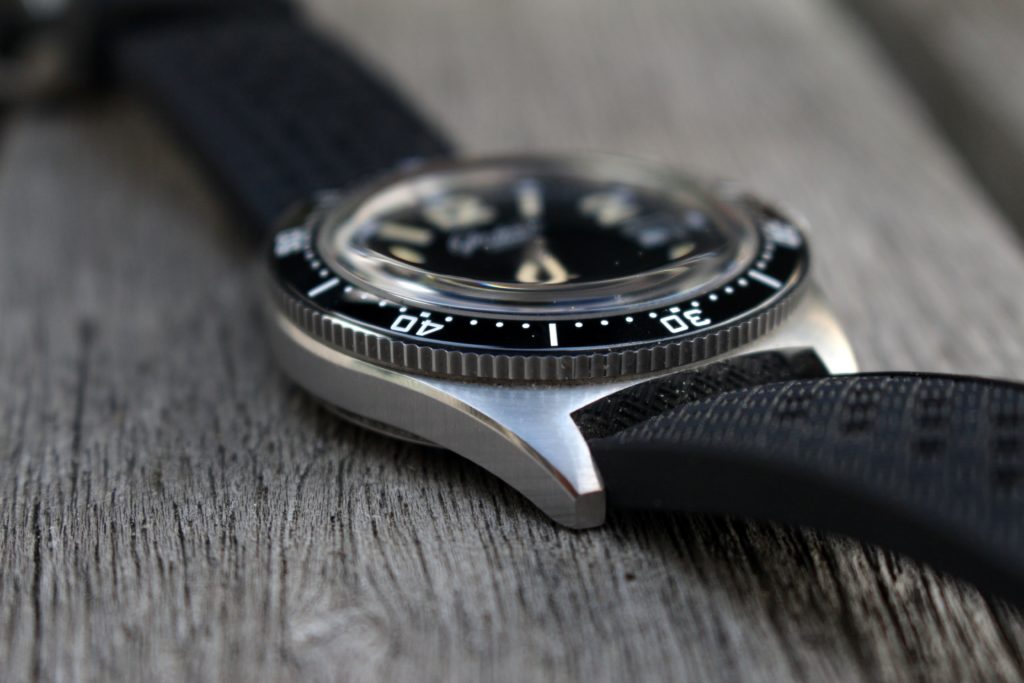
Glashütte Original pays special attention to the dials of their watches and while the SeaQ forgoes the striking colors of the Sixties collection, its black dial receives no less attention. After the brass dial is punched and polished, it is brushed to achieve the subtle sunray finish that comes alive in direct sunlight. The numerals, indices, and text are separately applied before the “Old Radium” Super-LumiNova is hand-painted onto the dial and hands. In contrast to the jet-black ceramic bezel, the dial is constantly changing both color and texture. Indoors, the face often appears pure black with a gloss finish, but at home in the sun and waves the dial turns dark gray as the sunburst effect becomes fully visible.

Smoothly beating inside the watch is the in-house 39-11 automatic movement. In keeping with the exterior of the watch, the movement is incredibly finished and accurate. The movement houses a swan-neck regulator, a rate adjustment mechanism favored by Glashütte manufacturers. While the Panorama Date displays its movement through a sapphire caseback, the SeaQ has a beautifully etched solid caseback in keeping with its loyalty to the 1969 model. If ever there was a watch where a clear caseback would feel out of place, it’s the SeaQ. The deeply etched trident, Glashütte Original logo, and waves across the back both look and feel amazing. The caseback is vertically aligned, a rare feature that could easily go unnoticed but that is a subtle reminder of the watch’s German sensibility.
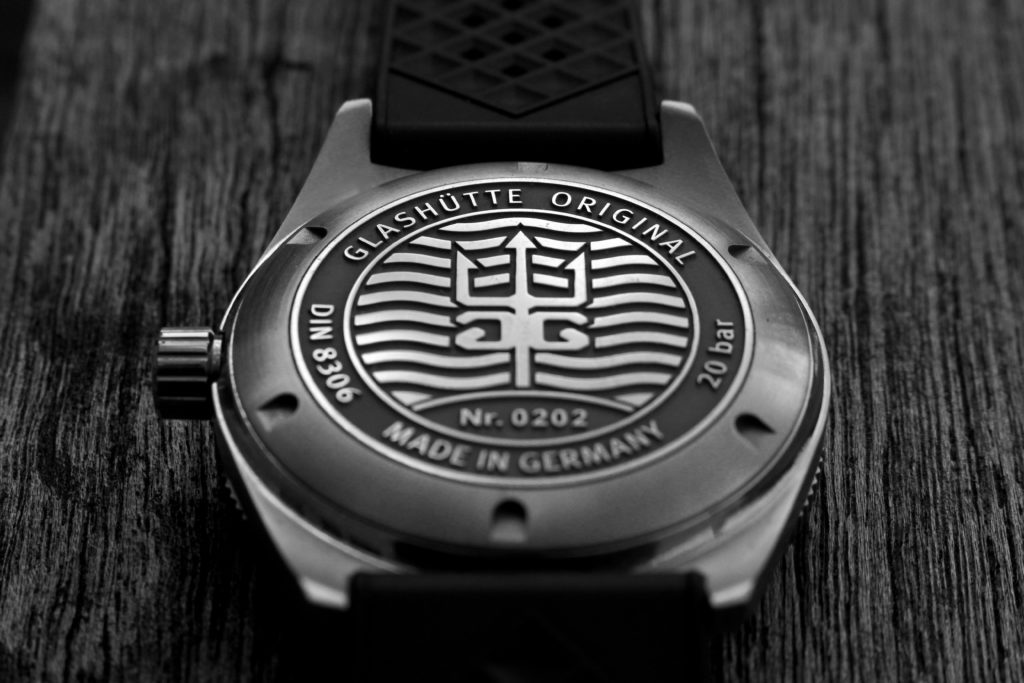
Also located on the back of the watch is the DIN 8306 rating, the German equivalent of the ISO dive standard. Along with its unidirectionally rotating ceramic bezel, the SeaQ is water resistant to 20 bar or 200 meters, making it a serious entry into the dive watch category. Both SeaQ models are rigorously tested by Glashütte Original prior to sale, including extended periods of time spent in water pressurized past the watch’s official limits. The broad-arrow minute hand and clear numerals make the SeaQ extremely legible no matter the surrounding environment.
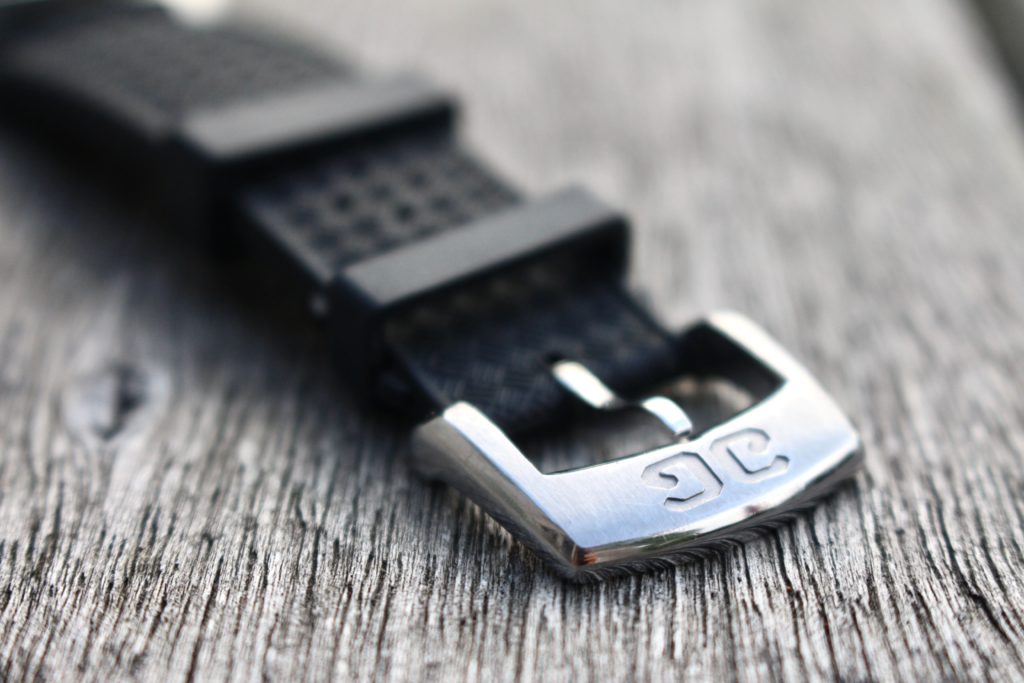
The SeaQ is available on three straps: A steel bracelet, a soft, synthetic woven strap, and this tropical rubber band with the Glashütte Original logo etched into the buckle. The rubber strap is in keeping with the look of the 1969 Spezimatic and feels sturdy yet supple and comfortable. As tropical straps make their return across the market, the rubber looks perfectly at home on the SeaQ. The SeaQ 1969 is a limited edition of the SeaQ with a production run of just 69 pieces. The watch is the same as the unlimited production SeaQ with the addition of green lumed hands and “25 Rubis – Shockproof” replacing “Glashütte I/SA” on the dial to match the text of the 1969 Spezimatic. While the standard SeaQ hands appear slightly less radioactive during the day, their lume is equally visible in the dark with a blue-green hue.

The SeaQ falls towards the upper limit of the dive watch price range but in finish, wearability, and heritage, the watch punches above even its high-end cost. Glasütte Original is known for complicated dress watches with stunning dials, big moon-phase indicators, and large date windows. None of the brand’s reputation for detail and precision is lost in the transition to the tool watch. If anything, the marriage of fun, 1960s dive watch design and high-caliber German watchmaking has led to something unrivaled in its category.
To have a look at all of Glashütte Original’s offerings visit their official website here.

Really love that watch, the only thing that bothers me is the fact that there ain’t any open case, what a shame, GO has such a wonderful finished movement.